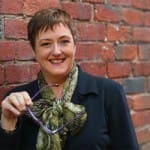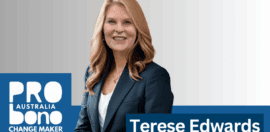A ‘Testing Time’ for Social Enterprise?
16 October 2013 at 8:50 am
Fostering an Australian social enterprise delivers some ‘testing times’ for those still at base camp reflects journalist and social enterprise founder Agnes Cusack.
The old saying that business plans are useless but the planning is indispensable has been occupying my thoughts lately. Experience tells me the saying has merit, so my question is at what point in the business cycle do you write the plan? 
Those who foster social enterprise schemes in Victoria favour getting a comprehensive document together up front, while their counterparts in the US say the business plan should be written after the idea has been thoroughly tested and shown to work.
The Crunch program that is run by Social Traders offers a grant of $10,000, classes at a Melbourne Business School, guidance from social enterprise experts, business mentors and a financial analyst – these fantastic resources a great opportunity for a would-be social enterprise wanting to make its idea a reality. However, there is one small organisation that quietly wishes that these resources had been focused on testing its business idea rather than sitting in a classroom and testing the limits of an Excel spreadsheet.
After spending the best part of a year at a desk putting a business plan together for a social enterprise, the downside to business planning without a prototype is sadly all too clear. Planning before you have a product means you are not taking in revenue, plus time invested in strategising rather than testing your idea adds to the risk of a competitor capturing the market or technology overtaking your plans.
The Crunch does a good job in assisting with research, asking potential clients about the services they need and how much they can pay. From there participants set about writing a feasibility study followed by a business plan. The small organisation found that without a working model, its three-year financial predictions were largely a work of fiction. Social Traders, which also rightly doubted the financials, asked that the logic behind the spreadsheets be tested by extending the financials out to six years. This resulted in Pinocchio-like-spread sheets – very long and silly. In the last week of the course the group was told to halve its budget predictions. It didn’t need an MBA to know it was in trouble.
In August this year I visited the D- (Design) School at Stanford University as part of a four-day reunion for the Knight Fellowship for Professional Journalists. David Kelley, who built the first mouse for Apple, heads the D-School and chairs IDEO, an award winning global design firm that helps organisations in the public and private sector innovate and grow. The D-School tackles big, messy, ambiguous, real-world problems in a collaborative way, for example improving sanitation in the developing world.
Under a big sign declaring, “Nothing is a mistake. There is no win and no fail. There’s only make.” Kelley advises against strategising and doing long range financial planning. Instead he talks about ‘doing’ the thinking; his bias is towards action. Only when you have fully tested an idea, know that its works and is financially sustainable, do you write a business plan and think about expansion.
Kelley believes it’s the difficult and risky ideas that result in significant social change. He uses a process called Human Centered Design, HCD, (pardon the US spelling) to drive innovation at the D-School that brings industry, academia and the world beyond the university together to learn by ‘doing’. There are three aspects to the incubation: asking what’s wrong with the idea and hearing the answers, collaborating to devise solutions with testing and retesting to ensure they work, and then delivering on the social enterprise. The HCD toolkit is available as a free download at http://www.hcdconnect.org/toolkit/en
We should all be proud of the work being done to develop social enterprises in Australia. Given there is always room for good ideas, perhaps those fostering social enterprise should take a good look at the HCD toolkit. When it comes to social enterprise one size does not fit all and the toolkit could help make difficult ideas a reality. Wouldn’t it be wonderful to develop an incubator for social enterprise in Victoria that would test our good ideas until they work?
This is a summary of a presentation made to Office for the Community Sector’s Not for Profit Summit, held in Gippsland on 9/10/2013.
About the author: Agnes Cusack is an award winning journalist, former foreign correspondent and the Founder of the Multicultural Media Exchange. She presented her story at the 2013 Not for Profit Forum in Warragul.








